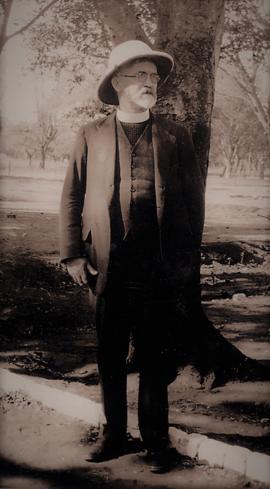Butler, Casimir, 1876-1958, Capuchin priest
- IE CA DB/35
- Person
- 12 October 1876-18 January 1958
Born in Sheastown in County Kilkenny, Michael Butler entered the Capuchin novitiate on 25 September 1896 taking Casimir as his religious name. He was ordained a priest in September 1903 and was subsequently appointed to the teaching staff of the Seraphic College in Rochestown in County Cork. In 1910 he was among the first Irish friars to undertake missionary work in the United States. His first appointment was in Hermiston in Oregon which was then a desolate railroad settlement. The task awaiting him was daunting as Fr. Thomas Dowling OFM Cap. noted: ‘whoever is appointed to Hermiston must be prepared for a lonely, self-sacrificing life’. The Servite Fathers who had arrived in Hermiston in early 1909, left the diocese in January 1910. Casimir began work immediately in Hermiston and completed a small church with a second-floor dwelling reached by an outside ladder. In 1912, with the assistance of Fr. Malachy Hynes OFM Cap., a new location was secured from the Maxwell Land and Irrigation Company. Fr. Brendan O’Callaghan OFM Cap. replaced Fr. Malachy in 1913 and Fr. Seraphin O’Reilly OFM Cap. arrived the following year. Together the friars built a new church which was consecrated on 24 October 1915. Before he left Hermiston, Casimir had built three mission churches including the Church of St. Patrick at Umatilla in Oregon. From Hermiston he went to the Old Mission Santa Inés in California where he and Fr. Stephen Murtagh OFM Cap. took charge following the death of Fr. Albert Bibby OFM Cap. on 14 February 1925. In 1929 Casimir joined the newly established Irish Capuchin mission in Cape Town, South Africa. In January 1932 he was appointed the first Superior Regular of the Irish Capuchin mission in Africa. He also ministered for some years in the pioneering Capuchin mission in Barotseland in Northern Rhodesia (now Zambia). Ill-health forced his return to Ireland from Africa in December 1946. He died in Dublin on 18 January 1958 and was buried in Glasnevin Cemetery.
Baptismal name: Michael Butler
Religious name: Fr. Casimir Butler OFM Cap.
Date of birth: 12 Oct. 1876
Place of birth: Kilkenny, Diocese of Ossory
Name of father: Tobias Butler
Name of mother: Catherine Butler (née Murphy)
Date of reception into the Capuchin Order: 25 Sept. 1896
Date of first profession: 4 Oct. 1897
Date of solemn profession: 2 Aug. 1902
Date of ordination (as priest): 13 Sept. 1903
Educational attainments: BA (RUI), 1901
Missionary assignments: Travelled to Hermiston, Oregon in 1910; Travelled to South Africa in 1929; Returned to Ireland in December 1946
Leadership positions: Superior Regular Foreign Missions in Africa (1932)
Date of death: 18 Jan. 1958
Place of death: Church Street, Dublin
Place of burial: Glasnevin Cemetery, Dublin










